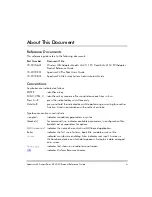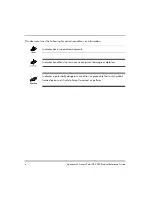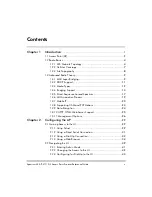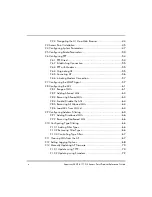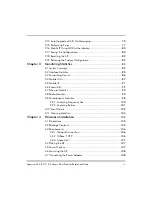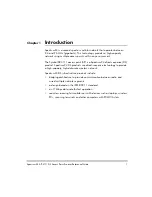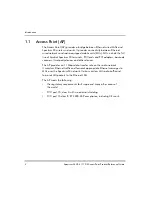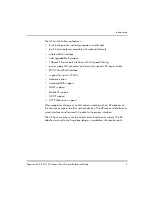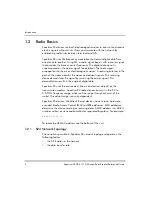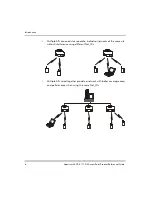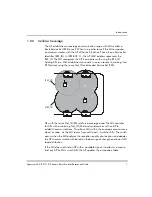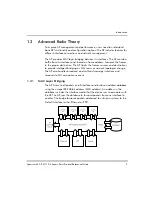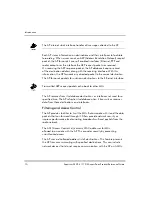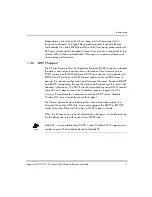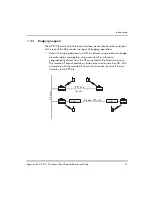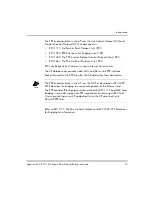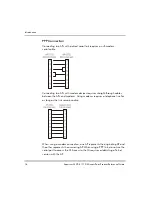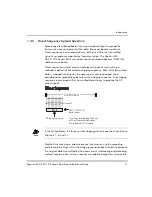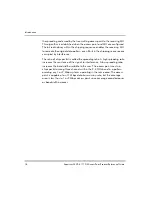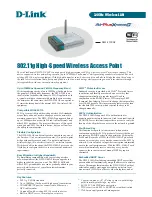
Introduction
4
Spectrum24 AP-4111 DS Access Point Product Reference Guide
1.2
Radio Basics
Spectrum24 devices use both
electromagnetic waves
to transmit and receive
electric signals without wires. Users communicate with the network by
establishing radio links between terminals and APs.
Spectrum24 uses
FM (frequency modulation)
to transmit digital data from
one device to another. Using FM, a radio signal begins with a carrier signal
that provides the base or center frequency. The digital data signal is
superimposed on the
carrier signal (modulation)
. The radio signal
propagates into the air as electromagnetic waves. A receiving antenna in the
path of the waves absorbs the waves as electrical signals. The receiving
device demodulates the signal by removing the carrier signal. This
demodulation results in the original digital data.
Spectrum24 uses the
environment
(the air and certain objects) as the
transmission medium. Spectrum24 radio devices transmit in the 2.4 to
2.5-GHz frequency range, a license-free range throughout most of the
world. The actual range is country-dependent.
Spectrum24 devices, like other Ethernet devices, have unique, hardware-
encoded
Media Access Control (MAC)
or
IEEE addresses
. MAC addresses
determine the device sending or receiving data. A MAC address is a 48-bit
number written as six hexadecimal bytes separated by colons. For example:
00:A0:F8:24:9A:C8
To locate the AP MAC address see the bottom of the unit.
1.2.1 S24
Network
Topology
The variations possible in Spectrum24 network topologies depend on the
following factors:
•
the AP function in the network
•
the data transfer rate
Summary of Contents for AP-4111 DS
Page 112: ...Monitoring Statistics 104 Spectrum24 AP 4111 DS Access Point Product Reference Guide ...
Page 120: ...Hardware Installation 112 Spectrum24 AP 4111 DS Access Point Product Reference Guide ...
Page 124: ...A 4 Spectrum24 Access Point AP 3020 Product Reference Guide ...
Page 126: ...B 2 Spectrum24 Access Point AP 3020 Product Reference Guide ...



